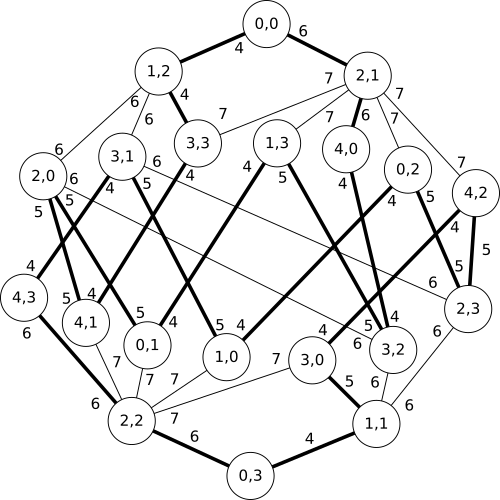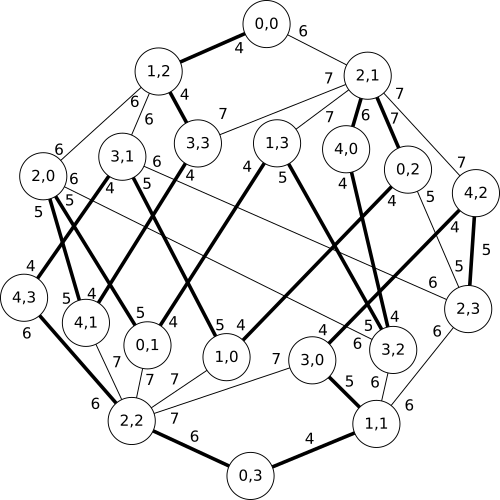i’ve been learning haskell, and it’s been going pretty well. i went to implement a version of the ‘knights tour’ problem, wherein a path traced by a ‘chess knight’, on a NxN checkerboard, is determined. in an effort to copy the fastest imperative implementations i tried to perform ‘in-place’ operations on a fixed board. the resulting code \works\ and looks very much like my imperative implementations, but is surprisingly slow. any help would be much appreciated, as i think i’m becoming comfortable working within monadic contexts, and now i’d like to learn how to write performant haskell.
for my mutable board i used STArray, and i wrapped it in State so i could do the graph traversal.
thank you in advance.
import Control.Monad.State (execStateT, StateT, get, put, lift)
import Control.Monad.Loops (whileM)
import Control.Monad (unless)
import Control.Monad.ST (runST, ST)
import Data.STRef (newSTRef, STRef, modifySTRef, readSTRef)
import Data.Array.ST (newArray, readArray, writeArray, STArray, getBounds)
-- unless, but with a monadic context
unlessM :: Monad m => m Bool -> m () -> m ()
unlessM mbool statement = mbool >>= (\bool -> unless bool statement)
-- search over these relative points
rd :: [Int]
rd = [2,1,-1,-2,-2,-1,1,2]
cd :: [Int]
cd = [1,2,2,1,-1,-2,-2,-1]
-- `False` if any element of the board is `-1`
isSolved :: STArray s (Int, Int) Int -> ST s Bool
isSolved arr = do
((r0,c0),(r1,c1)) <- getBounds arr
fmap (\x -> (not.(any (\y -> y == -1))) x) $ mapM (\i -> readArray arr i) [(idx, jdx) | idx <- [r0..r1], jdx <- [c0..c1]]
-- given the board and a location, find the locations to where the knight can travel
getNextPoints :: STArray s (Int, Int) Int -> (Int, Int) -> ST s [(Int, Int)]
getNextPoints board (idx, jdx) = do
((r0,c0),(r1,c1)) <- getBounds board
let size = 1 + r1 - r0
reachable = filter (\(i,j) -> (0<=i) && (i<size) && (0<=j) && (j<size)) [(idx+r, jdx+c) | (r, c) <- zip rd cd]
values <- mapM (\i -> readArray board i) reachable
return [p | (p, v) <- zip reachable values, v == -1]
-- find a tour if the knight starts at `(idx,jdx)` traversing the board held in state
-- `step` is the enumerated knight that is being placed
knightFrom :: (Int, Int) -> Int -> StateT (STArray s (Int, Int) Int) (ST s) ()
knightFrom (idx, jdx) step = do
-- get the board from the state
boards <- get
-- get the size of the board
((r0,c0),(r1,c1)) <- lift $ getBounds boards
let size = 1 + r1 - r0
-- update the board to place knight `idx` at location `(idx, jdx)`
lift $ writeArray boards (idx, jdx) step
-- if the board is solved, return
solved <- lift $ isSolved boards
if solved then do
return ()
else do
-- get the available points
next_points <- lift $ getNextPoints boards (idx, jdx)
-- act on the available points until (?) the board is solved
mapM (\p -> unlessM (lift $ isSolved boards) (knightFrom p (step+1))) next_points
-- backtrack if the board is not solved
solved <- lift $ isSolved boards
if solved then do
return ()
else do
lift $ writeArray boards (idx, jdx) (-1)
return ()
readInto2DList :: ST s (STArray s (Int, Int) a) -> ST s [[a]]
readInto2DList st_arr = do
arr <- st_arr
((x0, y0), (x1, y1)) <- getBounds arr
mapM (\j -> mapM (\i -> readArray arr (i, j)) [x0..x1]) [y0..y1]
findTour :: Int -> [[Int]]
findTour size = runST $ do
brd <- newArray ((0, 0), (size-1, size-1)) (-1) :: ST s (STArray s (Int, Int) Int)
readInto2DList $ execStateT (knightFrom (0,0) 0) brd


